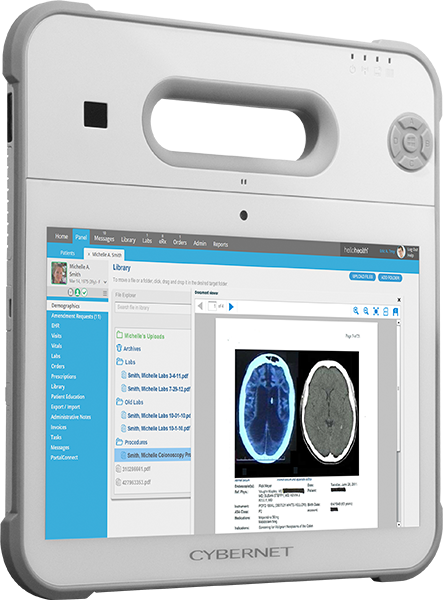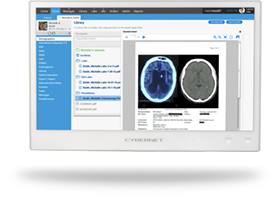10.5 trillion dollars. That is the estimated annual cost of cybercrime-related damage by the end of 2025. Last year, the Federal Trade Commission received nearly 6.5 million reports, with the crimes ranging from fraud to identity theft to breaches in healthcare cybersecurity. IT departments in virtually every economic sector have turned to user authentication as one of the first lines of defense, ensuring that only authorized personnel have access to the business's digital assets, whether industrial PCs, IoT networks, or AI computers.
What is User Authentication?
Simply put, user authentication is the process of ensuring that the user requesting access to a particular system is who they claim to be. While the "user" in authentication processes is usually a person, it can also be a program, as in third-party integration requests.
The process, in simplest terms:
- The user provides identification information through methods such as a username and password, RFID badges, and smart cards.
- The system checks whether the user's provided information is authentic.
- It sends a response, granting access if the information is authentic and denying access if not. (It also sends a message to the security department in the latter scenario.)
Workstations, networks, websites, mobile devices, web-based services, and hardware applications are just some examples of systems that should include some form of user authentication.
The Importance of User Authentication
Authentication ensures that only authorized users and processes have access to protected IT resources. When correctly set up, a secure user authentication does the following:
Convenience and efficiency — More and more users need access to applications and services on their devices, corporate networks, and the cloud. The simple password-based authentication systems of yesteryear have become cumbersome for many users and have exposed secure resources to bad actors.
Secure third-party integration — Today's networks, software systems, and databases are intimately connected thanks to advances in application programming interface (API) economy and microservices architectures. Secure authentication methods are essential to prevent accidental data exposure and protect against cyberattacks.
Minimize the inevitability of cyberattacks — Phishing, baiting, and quid pro quo are social engineering techniques that trick users into providing sensitive information, such as logins. User authentication best practices aim to prevent unauthorized access to information, networks, and other sensitive systems.
User Authentication Best Practices
To ensure only authorized users are accessing digital assets, you and your IT team should consider implementing the following best practices.
Implement Multi-Factor Authentication (MFA)
Simply, set up two or more user authentication systems to access resources. By requiring users to provide multiple forms of identification, it becomes much harder for bad actors to gain unauthorized access. Common MFAs include text and call One-Time Passwords (OTPs), magic links, and authenticator apps. If implementing authentication systems using RFID and smart cards, consider purchasing business computers with readers already built in. Such a setup is not only convenient but also means less equipment for you and your team to deal with.
Use Strong Password Policies
Passwords still are a critical component of many security systems. For best practices, require users to set a minimum password length (typically 12+ characters) that includes uppercase and lowercase letters, numbers, and special characters. Password-checking programs can ensure they're following guidelines as well as detect common or compromised passwords (e.g., 1234, password). Set up the system to lock the account after a specified number of login attempts.
Employ Secure Password Storage
Cyberthieves will try to break passwords through brute-force attacks (trying many password combinations) or steal stored master lists. Prevent these by storing a cryptographic hash of the passwords. Argon2, bcrypt, and PBKDF2 are strong, slow hashing algorithms, and are designed to make it virtually impossible to recover the original password.
Use Secure Communication Protocols
Unsurprisingly, many cyber breaches occur online and within company networks. Ensure they're secure and their data is protected. HTTPS encrypts all web-based communications. Same with STFP for large file transfers. S/MIME protects email communication through digital signatures and encryption, while WPA2/WPA3 secures company Wi-Fi accounts. Make sure to regularly update and patch these communication protocols for known vulnerabilities.
Provide User Education and Support
Many a cybercriminal has tricked unsuspecting employees into giving them access to company resources, namely through phishing or spoofing. Prevent these by educating users about secure authentication practices. Train them, for example, how to spot such schemes. Reinforce the importance of new password protocols, including the risks of reusing the same one across multiple applications and services.
Future User Authentication Technology
In IT, it's almost a cliché that for every vulnerability or loophole you find and close, cybercrooks will find at least three more. To close this gap, consider exploring these advanced authentication methods and technologies.
Zero-Trust Security Model
In a zero-trust security model, all users must be constantly authenticated to access digital resources. This is a break from the traditional process, in which a user is granted full access to resources after being verified by the access systems. While the model makes it much more difficult for breaches like phishing, it can be cumbersome for users, who are forced to request connectivity to a particular resource each time. You'll want to work closely with all involved parties to ensure any slowdown is minimized.
Behavioral Biometrics
Behavioral biometrics is one of the various types of biometric authentication, which use innate characteristics of the user, to identifies them to the digital asset. Biological metrics use the person’s DNA from a blood sample, while morphological biometrics focus on their physiology, like fingerprints and the characteristics of their eye. Behavioral biometrics, as the name implies, identifies the user via their behavior. The most well-known example is voice recognition. Consider using this authentication system if users require fast access to highly sensitive data and you don't want to rely on even the most secure traditional authentication systems.
Artificial Intelligence and Machine Learning in Authentication
Artificial intelligence (AI) enables computers to simulate human intelligence: comprehension, creativity, learning, and problem-solving. Machine learning (ML) is a form of AI that learns from its data in order to improve itself without additional programming. Both are used for authentication to identify users; with behavioral biometrics, for example, AI can identify a user based on how they type their password while logging in.
Authenticate Your Users with Cybernet Products and Services
Once the standard login method, usernames and passwords are now increasingly being discarded as inadequate, as cyberattacks have steadily increased and succeeded to breaching networks. MFA, security protocols, and AI-supported biometrics are being adopted as best practices for identifying users to their authorized digital assets.
Contact Cybernet Manufacturing if you're looking to roll out user authentication across your company or organization. We support most methods, with many, like fingerprint scanners and RFID readers, already built into our computers and tablets. As an Original Design Manufacturer, we can further customize our products to meet your exact cybersecurity needs.


